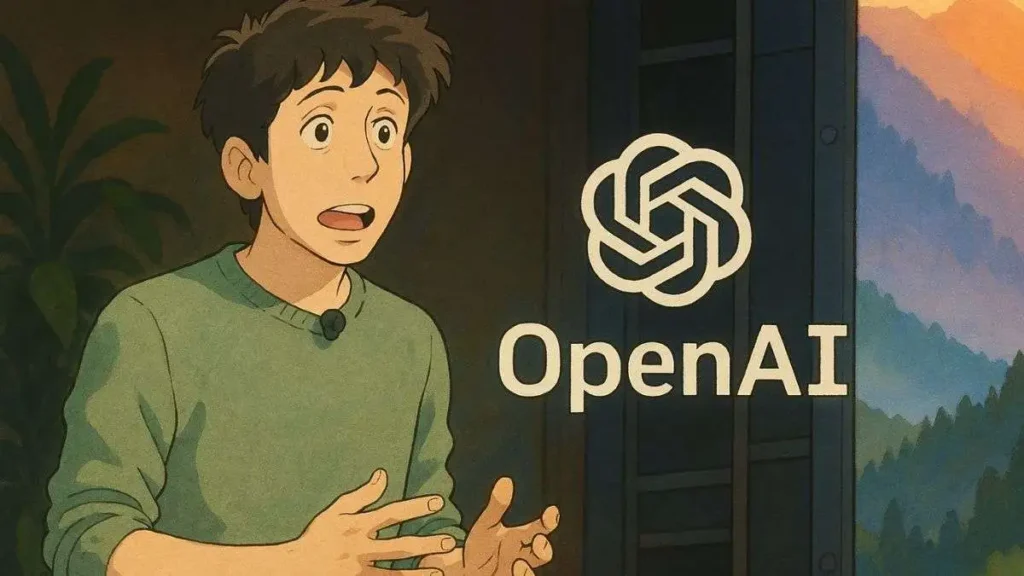
In early 2025, OpenAI’s latest update to its GPT-4o model sparked a viral sensation: the ability to transform everyday photos into whimsical Studio Ghibli-style artwork. From selfies to memes, social media platforms like X and Instagram overflowed with dreamy, hand-drawn-esque images reminiscent of Hayao Miyazaki’s iconic animation studio. While this AI-powered feature has delighted fans and casual users alike, it’s not without its downsides. Beneath the surface of this creative playground lies a host of disadvantages, particularly the unsettling issue of data collection. Let’s dive into why OpenAI’s Ghibli art software might be more of a privacy gamble than a harmless pastime.
The Allure of Ghibli Art
There’s no denying the appeal. With a simple upload and a text prompt, users can see themselves, their pets, or even historical moments reimagined in the soft pastels and intricate details of Studio Ghibli’s aesthetic. The technology, integrated into ChatGPT, showcases the power of multimodal AI, blending text and image generation with stunning accuracy. For Studio Ghibli fans, it’s a chance to step into the magical worlds of Spirited Away or My Neighbor Totoro. But as the saying goes, if something seems too good to be true, it probably is.
The Disadvantages: More Than Meets the Eye
While the Ghibli art trend is undeniably fun, it comes with significant drawbacks that users should consider before jumping in. Here are some of the key disadvantages:
- Loss of Creative Control
AI-generated art, while impressive, lacks the soul and intentionality of human-made work. For artists and purists, this mass production of Ghibli art images can feel like a cheap imitation of a craft that took decades to perfect. Hayao Miyazaki himself famously called AI-generated animation “an insult to life itself,” a sentiment that resonates when you consider the painstaking effort behind every frame of a Ghibli art film. - Ethical Concerns
The software’s ability to mimic Studio Ghibli’s style raises questions about intellectual property. Many speculate that OpenAI trained its model on copyrighted Ghibli works without explicit permission—a legal gray area that could undermine the studio’s legacy and the livelihoods of human artists. - Environmental Impact
Generating AI art isn’t free for the planet. Studies suggest that creating a single image can consume as much energy as charging a smartphone, contributing to a larger carbon footprint—a far cry from the eco-conscious themes often found in Ghibli films. - The Data Collection Trap
Perhaps the most alarming disadvantage is how OpenAI handles user data. When you upload a photo for a Ghibli makeover, you’re not just getting a cute avatar—you’re potentially handing over personal information to a tech giant with a murky track record on privacy.
The Data Collection Issue: A Closer Look
The data collection practices tied to OpenAI’s Ghibli art software have sparked widespread concern among privacy advocates. According to OpenAI’s privacy policy, the company collects personal data—like the photos you upload—to improve its services and train its AI models, unless users explicitly opt out. This means that every selfie or family snapshot you submit could become part of a vast dataset, fueling future AI advancements without your explicit consent.
Digital privacy experts, including voices on X, have labeled this a “PR trick” to amass thousands of personal images under the guise of a fun trend. Unlike web-scraped data, which OpenAI must justify under strict regulations like GDPR’s “legitimate interest” clause, voluntarily uploaded photos fall under a different legal umbrella. By uploading, you’re giving consent for processing, sidestepping some of the stricter safeguards. The result? OpenAI gains free access to high-quality, original images—yours—while you’re left with a stylized version and little control over what happens to the source material.
The risks are real:
- Data Retention: OpenAI may store your images indefinitely for training purposes.
- Security Breaches: If the platform’s safeguards fail, your personal photos could be exposed.
- Third-Party Sharing: There’s no guarantee your data won’t be shared with partners or affiliates.
- Lack of Transparency: OpenAI hasn’t fully clarified how long it keeps data or how it’s used beyond vague “service improvement” claims.
Why It Matters to You
For the average user, the thrill of seeing yourself as a Ghibli character might outweigh these concerns—until it doesn’t. Imagine your photo being used to train an AI that generates deepfakes or ends up in a leaked dataset. Privacy isn’t just about today; it’s about the unknown uses of your data tomorrow. And for those who value the artistry of Studio Ghibli, there’s an added sting: participating in this trend might indirectly erode the very craft you admire.
Alternatives and Precautions
If you’re still tempted to try the Ghibli effect, consider these steps:
- Opt Out: Check OpenAI’s settings to disable data usage for training.
- Use Anonymized Images: Upload generic or non-personal photos instead of selfies.
- Explore Free Alternatives: Tools like Craiyon or Artbreeder offer similar effects with potentially less invasive policies.
Final Thoughts: Art at What Cost?
OpenAI’s Ghibli art software is a double-edged sword. It’s a testament to AI’s creative potential, but its disadvantages—especially the data collection issue—cast a long shadow. Before you upload your next photo, ask yourself: is a fleeting moment of fun worth the permanent loss of privacy? For many, the answer might be no. In a world where technology often outpaces ethics, it’s up to us to decide where to draw the line—preferably with a hand-drawn pencil, not an algorithm.
